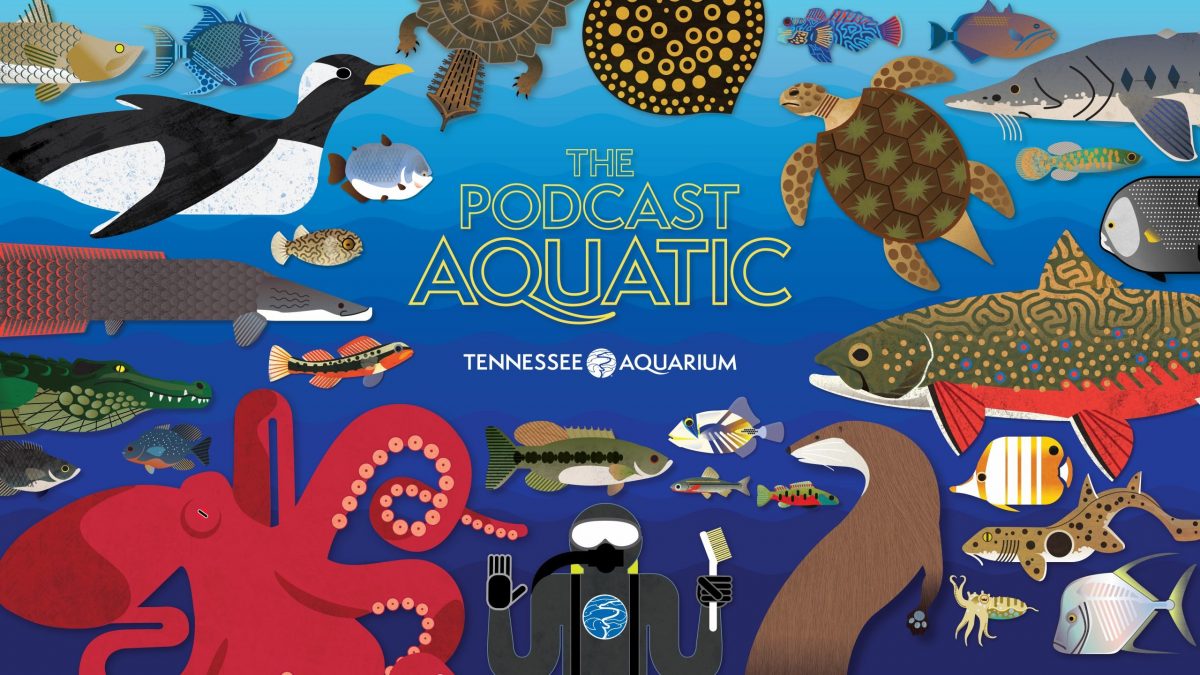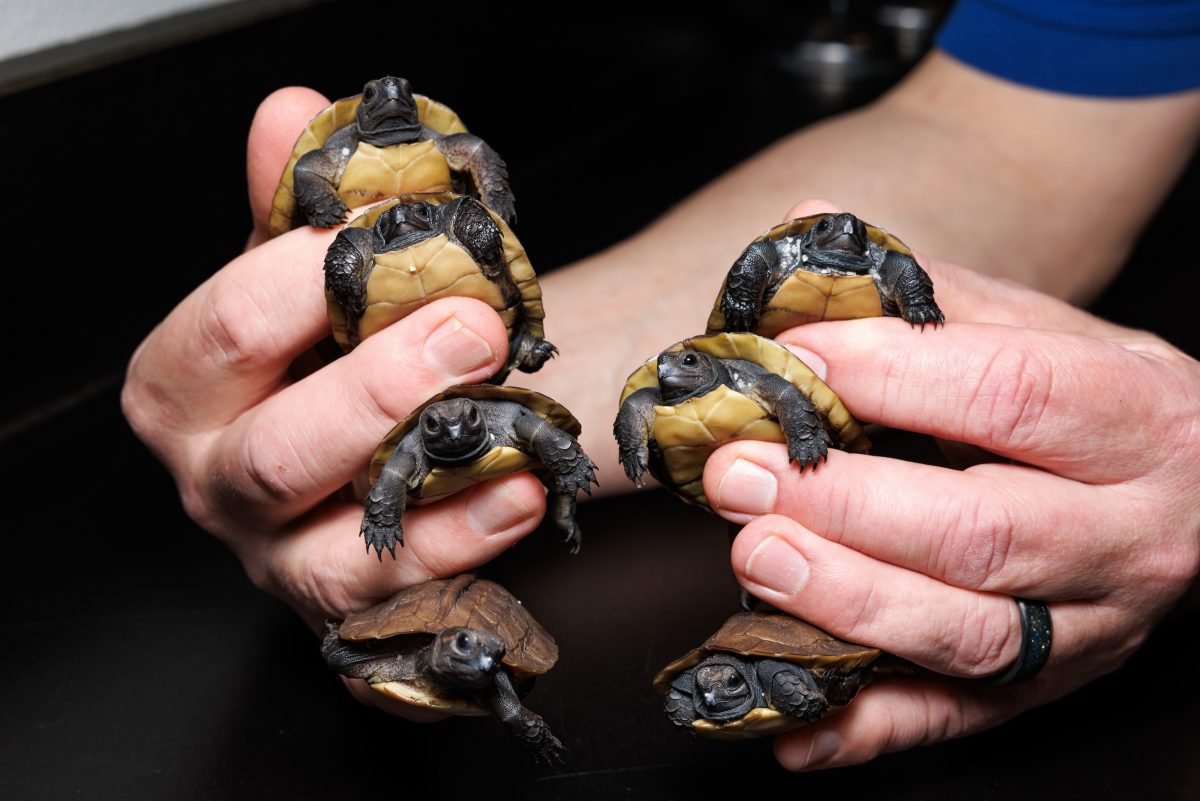Senior Aquarist Elaine Robinson has spent much of her career caring for tropical freshwater fishes hailing from the waters of South America’s Amazon River basin. Among her responsibilities at the Aquarium, Robinson maintains the Rivers of the World gallery’s two Amazon River and Seasonal Floodwaters exhibits, and the large Flooded Amazon exhibit at the exit to the River Journey canyon.
In total, she cares for more than three dozen species that come from our planet’s largest river system.
Earlier this year, Robinson had the opportunity to see some of those familiar fishes in the wild when she embarked on a journey to learn about the sustainable aquarium fish trade with Project Piaba, a research organization dedicated to preserving the fisheries of the Rio Negro, one of the Amazon’s largest tributaries.
“Piaba means ‘little fish,’” Robinson says. “It refers to Cardinal Tetras, which are the main species the fisheries are centered around in the area.”
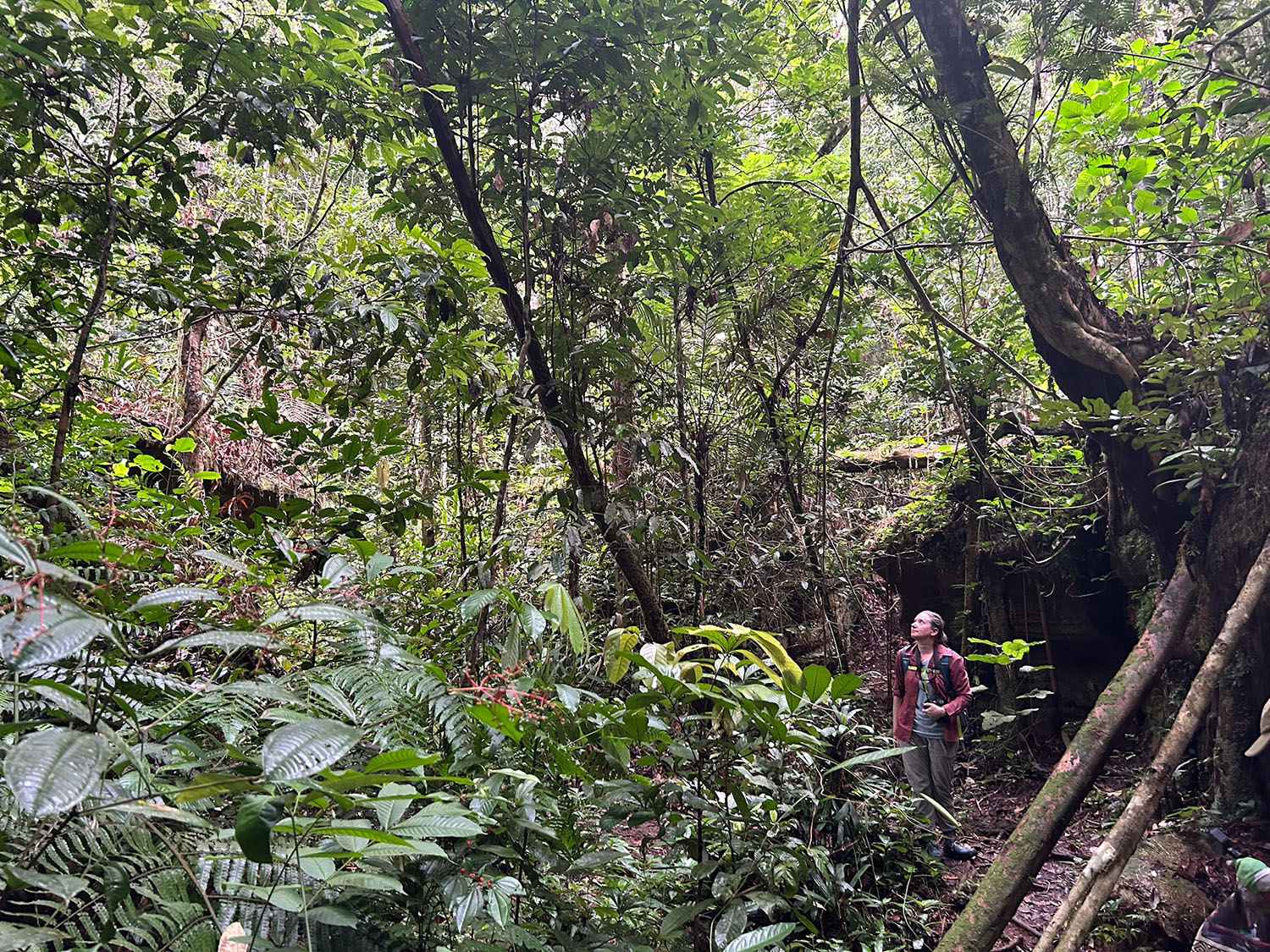
Senior Aquarist Elaine Robinson walks through the Amazon Rainforest.
Many of the freshwater fishes exhibited at the Aquarium are cultivated in human care, but some are collected from the wild. Fisheries located along the Rio Negro help provide many of the species sought after by aquariums and kept by hobbyists worldwide. They also serve as an important and sustainable source of income for rural Amazonians.
Those fisheries do more than just alleviate poverty. Recognizing their lives are inextricably linked to the health of the river and the rainforest, the fishing communities along the Rio Negro also work to protect the environment around them, helping to conserve the river rather than pursuing less-sustainable sources of income.
To learn about these sustainable fisheries, Robinson accompanied Project Piaba scientists on a trek from Manaus, Brazil, first by canoe and later by motorized boat. Sleeping in cabins that utilized collected river water for showers and toilets, Robinson’s group steadily made their way upriver, stopping along the way to snorkel in search of fish or meet the locals who work the river’s fisheries.
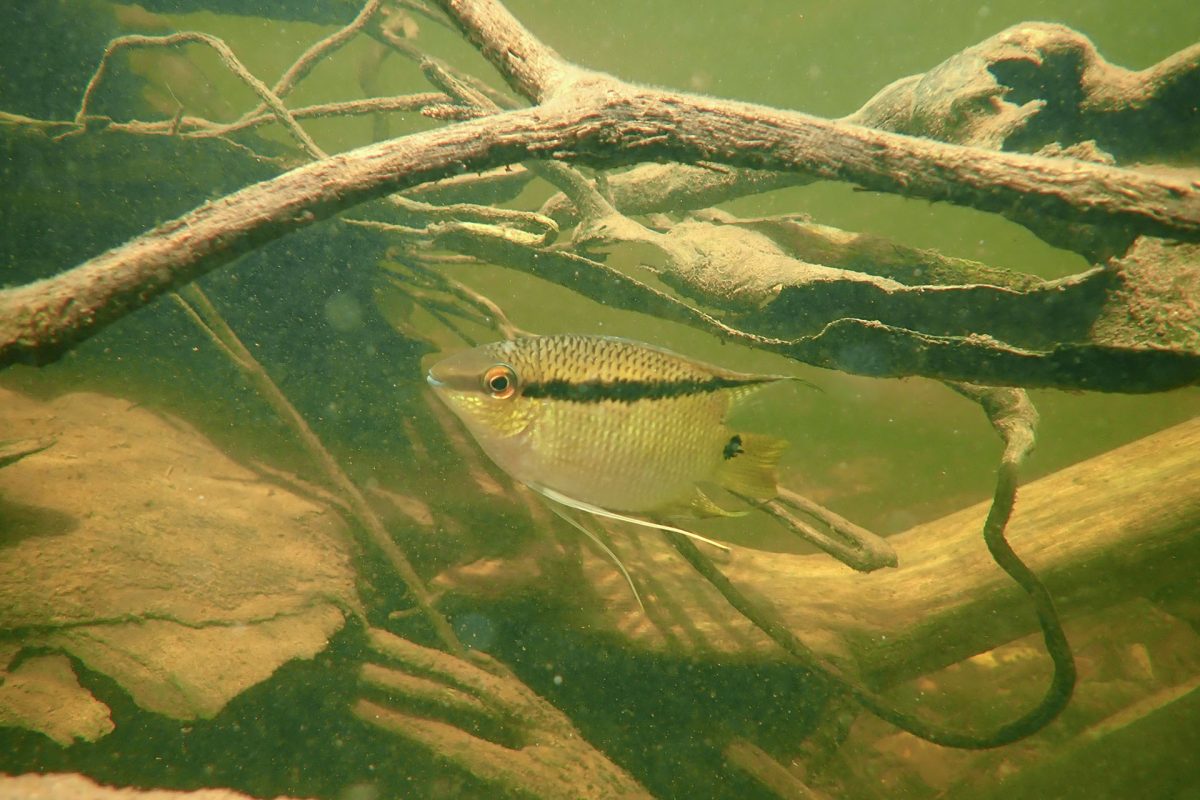
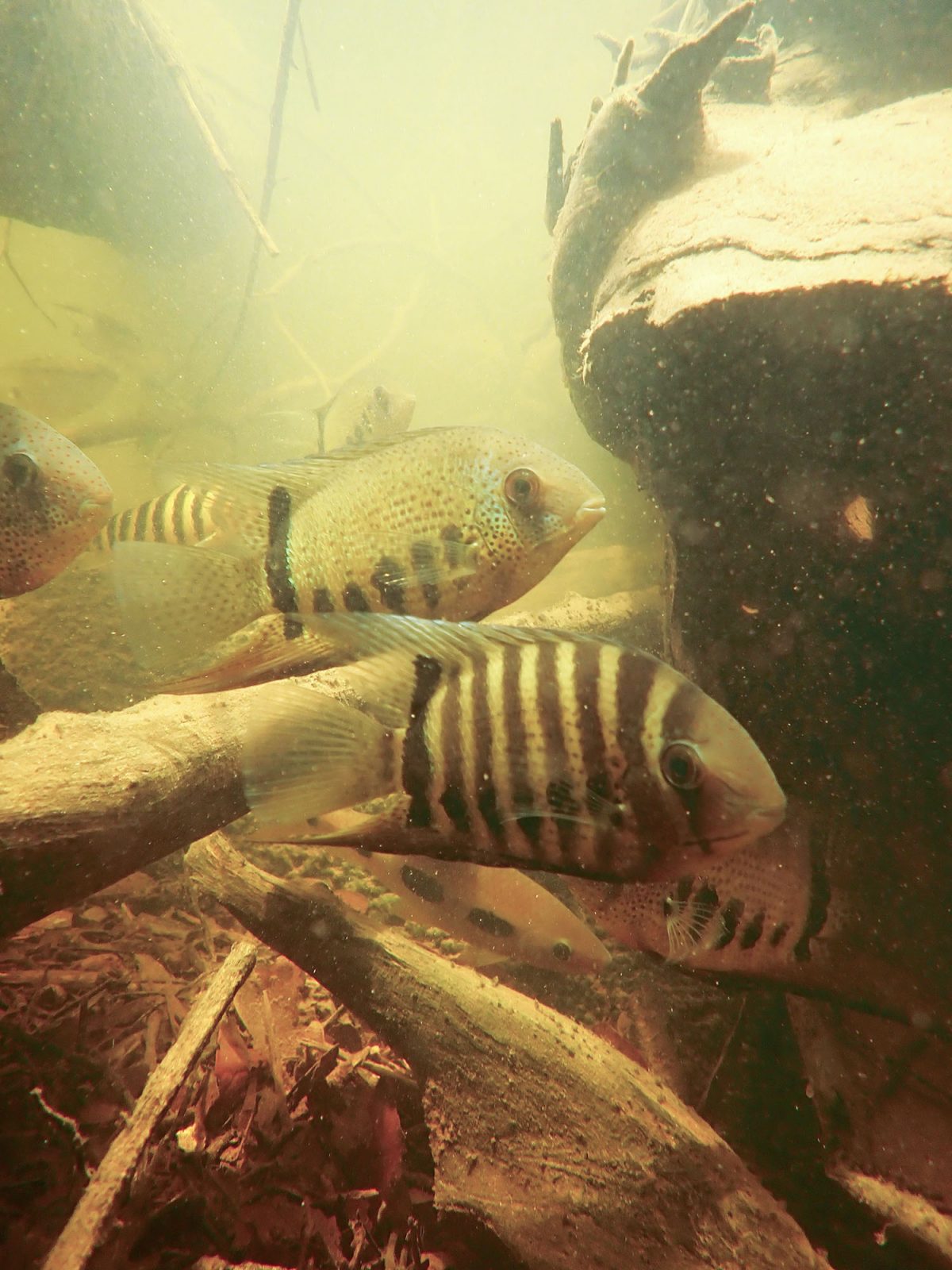
Left: Flag Cichlid. Right: Severum Cichlids.
One of the group’s first stops was a blackwater stream. In areas along the river with lots of sandstone, the sandy beaches act as a giant filter as water drains through collected organic matter like plants and leaves and into the river. Tannins from that decaying organic matter accumulate in the water, giving it a dark coloration resembling tea and making it acidic.
Amazonian fish love tannic water, and the group found their very first Cardinal Tetras – along with a host of other species – in this blackwater snorkeling hole beneath a small, rocky waterfall.
“It was amazing the diversity in the different areas of the creek,” Robinson says.
With the tetras, cichlids, shrimp, pencilfish, catfish, and a watersnake all gathered in this single area, she was fascinated by the residents of this aquatic community moved about the stream, interacted with their environment and one another.
“I would’ve never believed how strong the current was in some of the creeks,” Robinson adds. “Seeing the little catfish get themselves down in the driftwood or other fish heading into the current and swimming in space just like our darters do was absolutely amazing.”
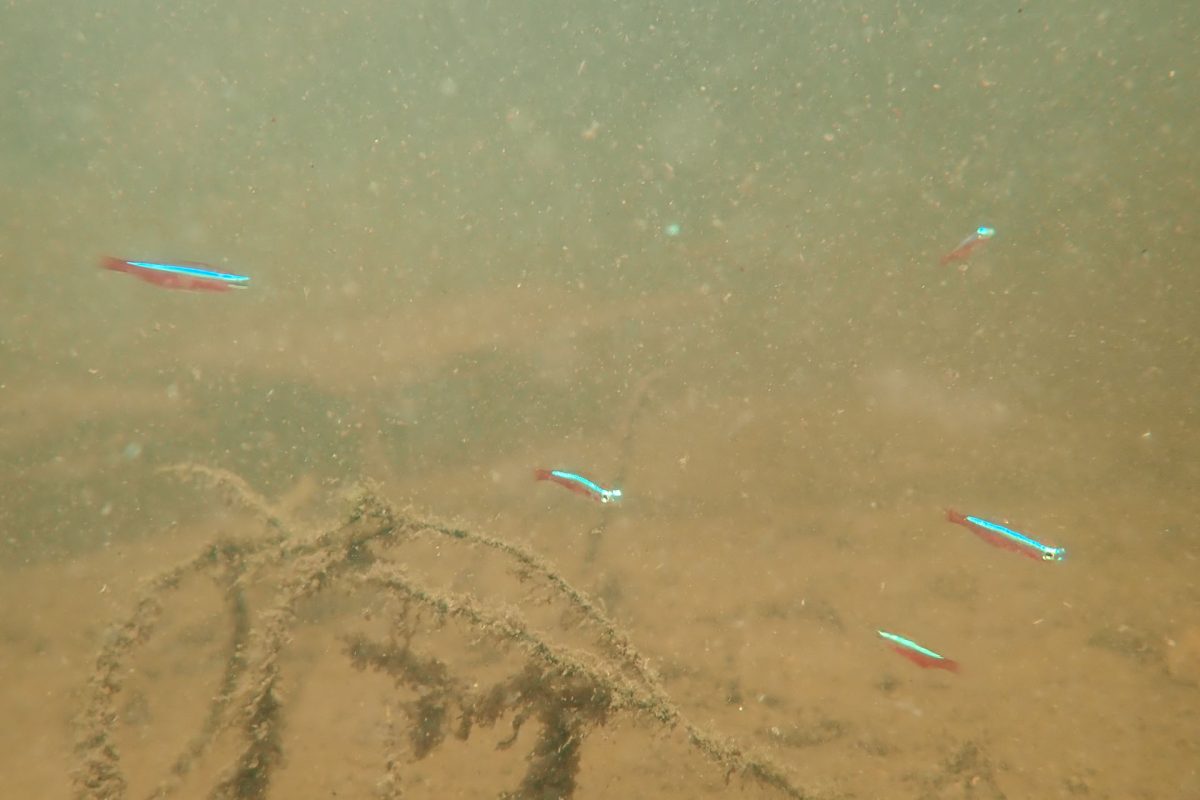
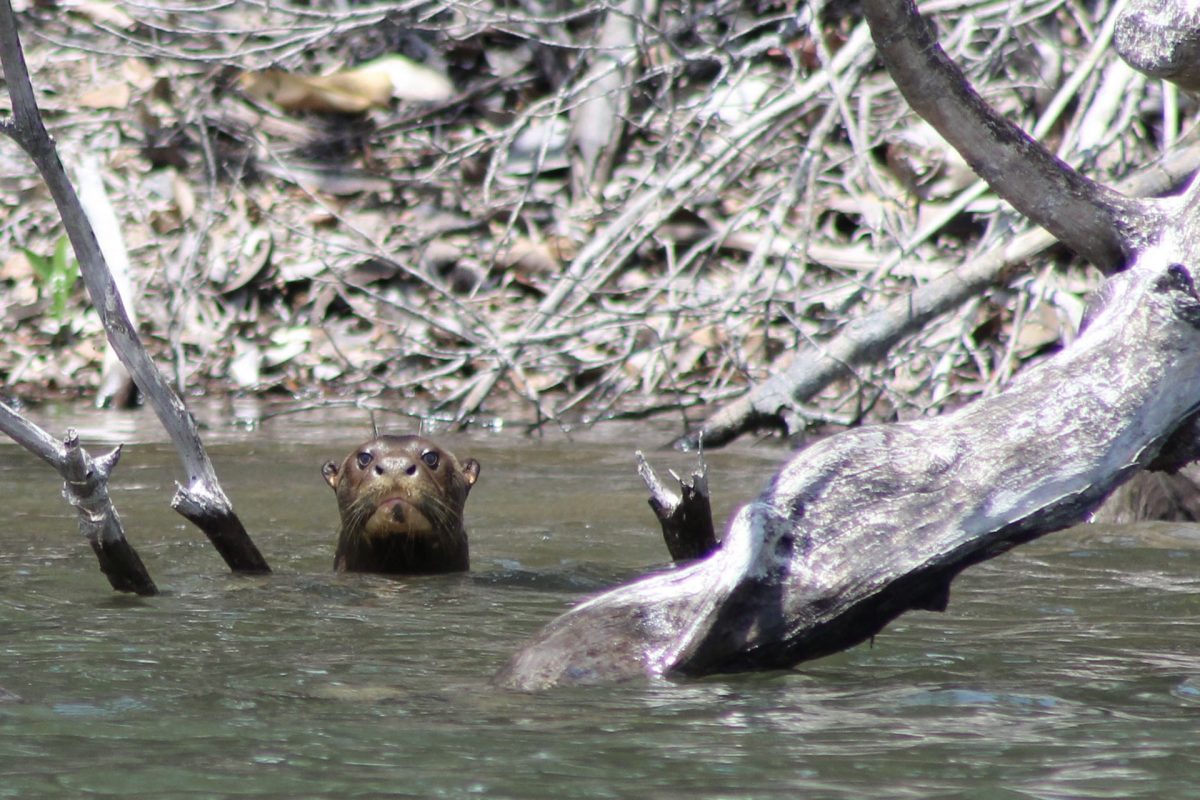
Left: Cardinal Tetras. Right: Giant River Otter.
The next day’s snorkeling brought the group to an entirely different sort of habitat, a whitewater stream filled with granite stones and plenty of treefalls. Here, they found a goldmine of freshwater stingrays — another species in Robinson’s care at the Aquarium — along with more cichlids, tetras, and even an electric eel.
“The stingrays were very chill,” Robinson says. “Mostly, they would just sit on the bottom. You would swim over them, and they didn’t really have a care in the world unless you accidentally got a little too close.”
This spot – her favorite of the trip – inspired her to attempt to re-create that thriving underwater landscape of fallen trees in a future Aquarium exhibit.
Other snorkeling spots featured Raphael Catfish, Thorny Catfish, Wolf Fish, and dense clouds of schooling Cardinal Tetras.
“You would just sit there and they would be all around you,” Robinson says. “They would start pecking at the hair or the dirt on your arms as you’re sitting in the water watching them.”
As the journey upriver continued, Robinson and the Project Piaba team met local Piaberos, the locals who fish the waters of the Rio Negro, to observe their methods and learn how they help preserve the ecosystems that sustain them. The Piaberos’ cultures are thoroughly interwoven with the river. In these small towns, many buildings are decorated with murals of Discus and Cardinal Tetras, and they host annual festivals that celebrate the Rio Negro and its residents.
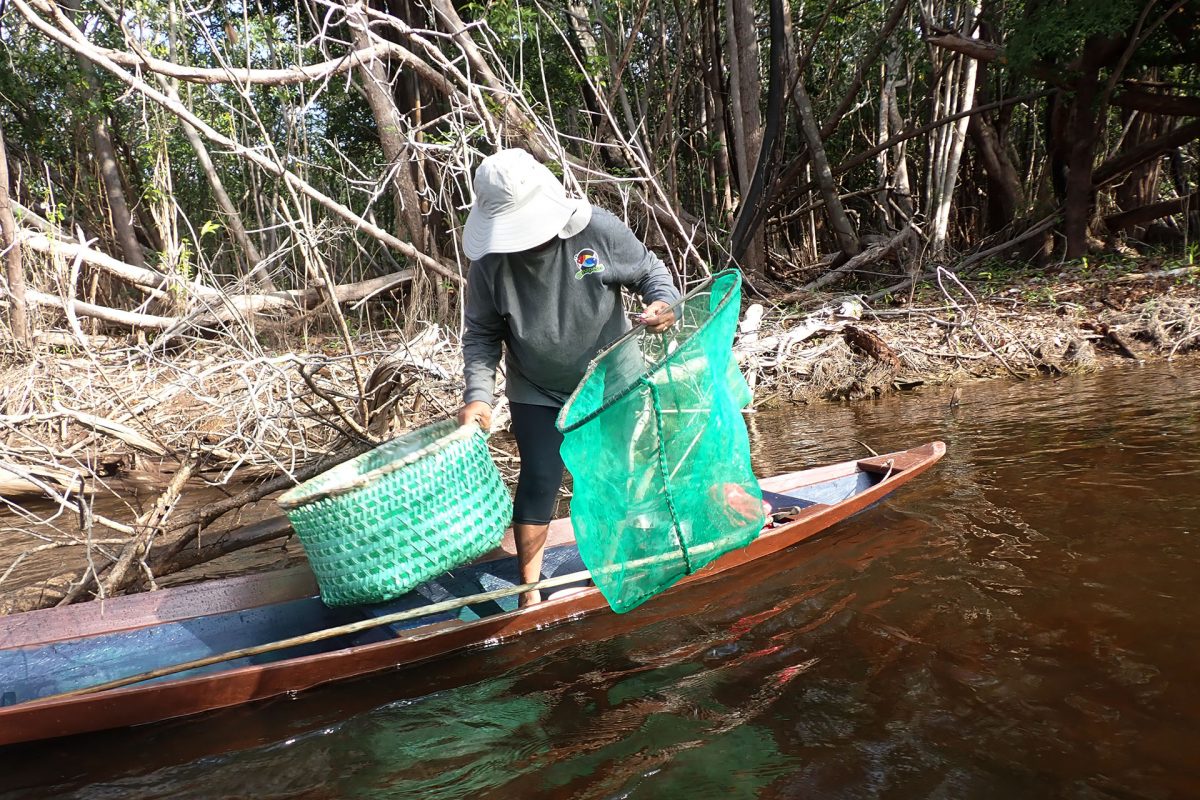
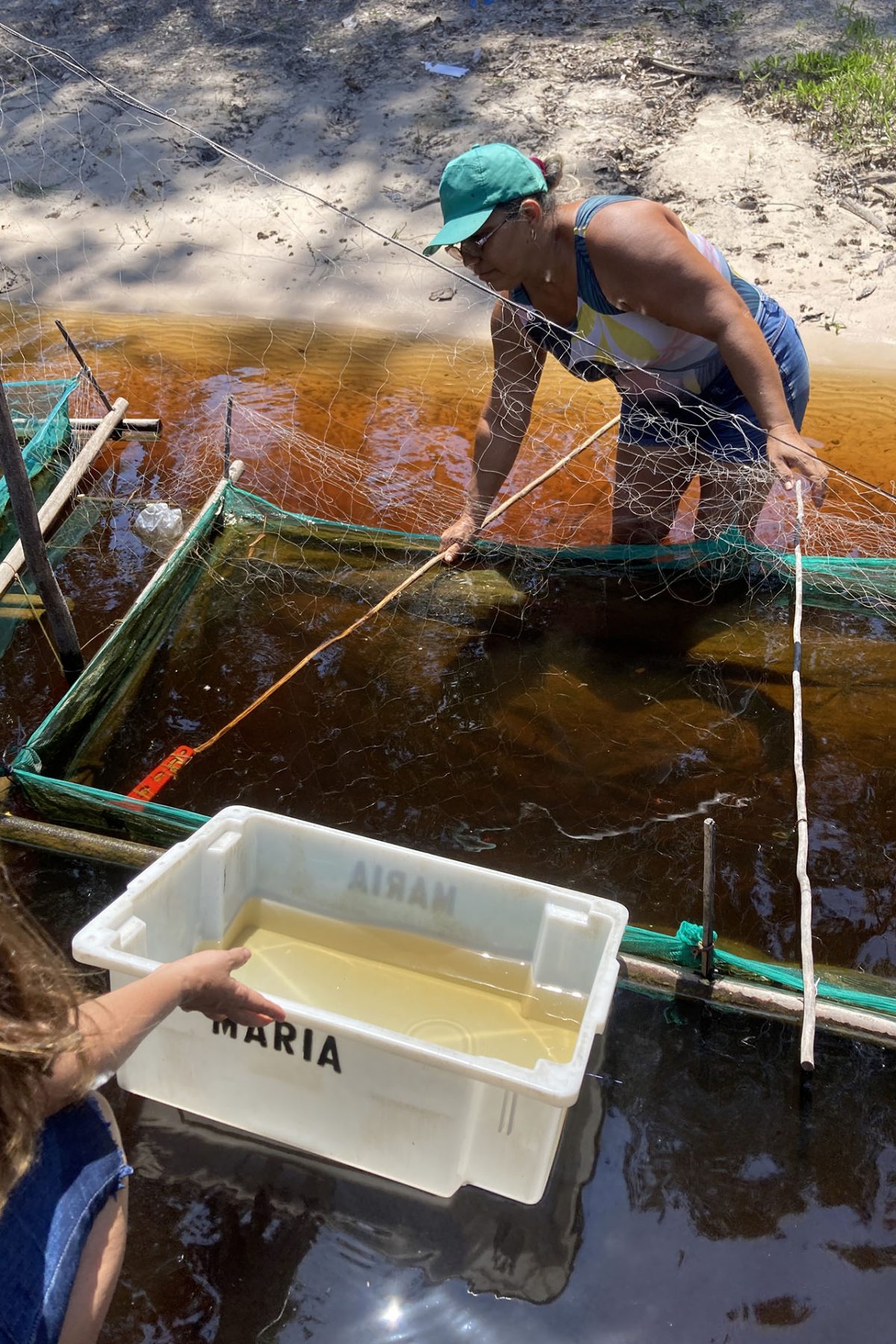
Piaberos work the Rio Negro fisheries.
For Robinson, the journey along the river was inspiring, and she hopes to use the knowledge gleaned to improve her care for the fishes in her charge at the Aquarium.
“I hope to better replicate their natural environment in our exhibits,” she says, adding that one of the most enlightening realizations was just how acidic the water conditions favored by these fish can be.
Robinson’s journey across Brazil was funded by a grant from the Aquarium’s Charlie Arant Professional Development Awards. Named for the Aquarium’s third president, the awards recognize Arant’s commitment to ensuring opportunities for professional advancement by Aquarium staff. The annual awards fund professional development projects by Aquarium employees to benefit their individual career growth while also serving the Aquarium’s mission.
Learn more about Project Piaba here.
